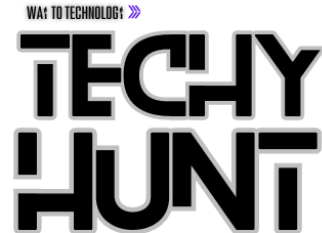In today’s worldwide economy, establishing a company’s Ultimate Beneficial Owner (UBO) has become essential to financial transparency and compliance. UBO check seeks to identify the individuals who own or control a corporation, regardless of the number of intermediaries. However, when dealing with complex ownership structures, conducting UBO checks may be difficult. These structures frequently involve many businesses, jurisdictions, and legal arrangements, making identifying the genuine owners difficult. This article will look at the main issues that UBO checks encounter while operating within complicated ownership structures and ways to overcome them.
Who is the Ultimate Beneficial Owner?
An Ultimate Beneficial Owner (UBO) is the person who gains the most profit from a firm or asset and has complete control over it. They get benefits even if they are not formally named as the business owner. To truly understand your customer or client, you must first identify the UBO. Typically, the Ultimate Beneficial owner is the person who has more than 25% of the organization’s shares and has significant decision-making power in the company. In case of criminal charges, beneficial owners remain hidden under the complex structure of management, enabling them to carry out illegal criminal activities.
Understanding UBO Checks
UBO checks are an important component of business verification. They keep an eye on the persons who own the company and prevent financial crimes such as money laundering and terrorist funding. In short, UBO checks are conducted by regulatory bodies that assess the company’s owners and ensure businesses operate with transparency and accountability.
The Complexity of Ownership Structure
-
Layered Ownership
Organizations usually have intricate and multilayered structures of ownership. Sometimes they may be owned by a person which in turn are owned by more owners. This creation of webs like ownerships is difficult to examine, each layer has its own legal requirements and privacy laws.
-
Jurisdictional Variations
Different states have different standards and regulations regarding ultimate owners’ disclosure. In some jurisdictions, beneficial ownership data is easily accessible; however, in others, it is not available. This can make it difficult for regulatory entities to obtain accurate and complete ownership information, particularly when dealing with companies spread across numerous countries.
-
Legal Barriers
Legal barriers can obstruct the Ultimate Beneficial Ownership checks, especially when dealing with trusts and nominee arrangements designed to provide anonymity. Trusts are particularly challenging because the legal owner can be sometimes different from the UBO (beneficiary). Nevertheless, in some cases, legal frameworks may allow for nominee shareholders who act on behalf of the real owners, further obscuring the ownership path.
-
Data Accuracy and Verification
Another major challenge in UBO checks is the accuracy and reliability of the beneficial ownership information. Sometimes, it can be misreported because of false declarations, outdated records, and misreporting, leading to undermining the integrity of the UB verifications. Accurate data analysis and verification require access to comprehensive and reliable data sources, which may not always be attainable.
-
Tech Shortcomings
The Know Your Business procedure is significantly enhanced because of the incorporation of technology. However, there are still shortcomings that continue to prevail. The automated systems may not sometimes capture complex ownership structures. In such cases, a manual intervention is required along with the expert analysis. In addition to that, data privacy regulations like the General Data Protection Regulation (GDPR) can impede the use of personal data in UBO checks.
Improving the Effectiveness of UBO Checks
UBO identification requires attention to detail. Despite the challenges, effective strategies can enhance the effectiveness of UBO checks.
Enhanced Due Diligence
Conducting Enhanced Due Diligence is important when dealing with intricate ownership structures. As compared to the standard due diligence, EDD is more in-depth, involving the scrutiny of financial statements, background checks, and transactions involved in business relationships.
Technological Advantage
Despite the limitations of technology, it also has significant benefits. Automated business verification methods can potentially enhance the effectiveness and efficiency of the UBO checks. Utilizing artificial intelligence, machine learning, and advanced analytics can help identify patterns and red flags that may indicate concealed ownership. Technology improves transparency and traceability in ownership records.
Regulatory Coordination
Advocating for coordinated regulations on beneficial ownership identification can simplify the UBO verification procedure. The easy accessibility of the UBO information can reduce the complexity and enhance the effectiveness of UBO identification checks.
Audits and Checkups
Audits and UBO checks play an essential role in maintaining a healthy and transparent business environment. Companies should conduct regular audits and update beneficial ownership information to ensure its accuracy and credibility. Establishing a robust internal process is crucial for maintaining updated records and regulatory requirements.
Concluding Thoughts
Navigating the complexities of UBO checks can be daunting at times. However, it is an essential prerequisite for corporate onboarding. A business must comply with the regulations to maintain its financial integrity and to build a good reputation. Identification of the ultimate beneficial owners is one of the most vital components of the KYB. By overcoming the challenges of the UBO checks, corporations can ensure transparency and prevent themselves from financial crimes, building trust in the corporate world.

